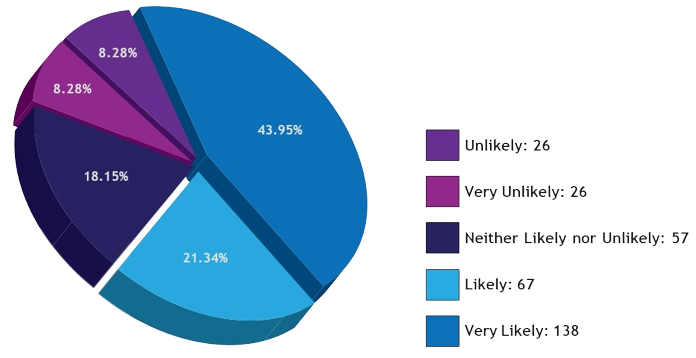AFGE Local 17 Members’ Response to the Proposed Plan for Return to the Office
Amidst plans by Secretary Denis McDonough to transition VA employees back to physical offices, the American Federation of Government Employees (AFGE) Local 17 Union carried out an extensive survey. The goal was to understand the collective sentiments of the VA workforce on this matter. This in-depth report unpacks the survey’s findings, spotlighting a strong preference for telework and vocalizing the concerns held by VA employees about the suggested changes in their work setting.
- Telework Survey Analysis and Report
- Where do you work?
- Secretary McDonough’s 50% Office Attendance Plan
- Coming to the Office No More Than 2 Days per Week
- Office Attendance 3 Days per Pay Period with One Specified Day for Team Collaboration
- Ideal Telework Days
- Communication and Collaboration During Telework
- Productivity During Telework
- Retirement Eligibility and Office Attendance
- Impact of Office Attendance on Retirement Decisions
- Consideration to Leave VA due to Increased Office Attendance
- Additional Feedback
- Download the Report
Telework Survey Analysis and Report
To Whom It May Concern,
In response to Secretary Denis McDonough’s proposal to reintroduce VA employees to in-office work, the American Federation of Government Employees (AFGE) Local 17, acting as a steadfast advocate for VA’s bargaining unit employees, undertook a comprehensive survey to gauge sentiments and preferences about telework and in-office attendance. This survey was aimed at understanding the perspectives of employees from various VA departments on the potential shifts in their work environment. The findings, detailed in the ensuing report, provide a deep dive into the collective voice of VA’s workforce, shedding light on their concerns, preferences, and insights into the proposed changes. As we navigate through the results, it becomes evident how crucial telework is to the well- being, productivity, and satisfaction of our dedicated VA employees.
Where do you work?
The diverse representation of respondents ensures a comprehensive understanding of the needs of VA employees across various departments. Most notably, 44.05% of respondents are from VACO, followed by VBA at 17.47%, and Board/BVA Administrative Professional at 14.68%. This broad spectrum of feedback is crucial for making informed decisions that cater to the diverse VA workforce.
Where do you work?

Secretary McDonough’s 50% Office Attendance Plan
An overwhelming 90.38% (combining strongly disagree and disagree) voiced their disagreement with Secretary McDonough’s plan of mandating a 50% in-office attendance. This dominant sentiment underscores a profound disconnect between the proposed plan and the preferences of the VA’s workforce. The data suggests that any move to implement such a plan may face significant resistance.
Secretary McDonough’s plan of bringing employees back to the office 50% (2 days one week and 3 days the other week during a pay period) is fine with me.

Coming to the Office No More Than 2 Days per Week
When asked about the possibility of being in the office for a maximum of 2 days per week, 64.81% (combining strongly disagree and disagree) expressed their opposition. This sentiment further reinforces the workforce’s inclination towards maximizing telework options, viewing it not just as a temporary measure but as a long-term preference.
I would be okay coming to the office no more than 2 days per week, which represents a slight decrease from 50% to 40% in-office days.

Office Attendance 3 Days per Pay Period with One Specified Day for Team Collaboration
Even when offered a seemingly more flexible schedule, 69.37% still rejected the idea of attending the office for 3 days per pay period. This response suggests that the workforce values consistent telework schedules over sporadic in-office days, even if it’s for collaboration.
I would be okay coming to the office 3 days per pay period – 2 days one week, 1 day the other week – but with one required in-office day (e.g. Wednesday) for my entire group/team to collaborate.

Ideal Telework Days
The preference for telework is evident, with 85.26% (combining 5 days and 4 days) expressing their desire to telework for the majority of the workweek. This data signifies that employees don’t view telework merely as a perk but as an integral component of their opCmal work environment.
How many days per week would you ideally like to work from home?

Communication and Collaboration During Telework
In a powerful endorsement of teleworking’s effectiveness, 96.70% (combining strongly agree and agree) confirmed their ability to communicate and collaborate effectively while working remotely. This counters any potential arguments that telework might hinder effective team interactions.
I’ve been able to sufficiently communicate and collaborate with my team members while working from home.

Productivity During Telework
A resounding 95.95% (combining strongly agree and agree) of the respondents believe they are more productive when working from home. This feedback suggests that telework isn’t just a matter of convenience, but it actively contributes to enhanced work output.
I’m generally more productive working from home.

Retirement Eligibility and Office Attendance
The majority, 80.25%, are not currently eligible for retirement. This stat highlights the need to consider telework policies, keeping in mind the long-term implications on a workforce that predominantly consists of individuals who will be serving the VA for years to come.
Are you currently eligible to retire?

Impact of Office Attendance on Retirement Decisions
Secretary McDonough’s plan of bringing employees back to the office 50% (2 days one week and 3 days the other week during a pay period) is fine with me.
I am eligible to retire and would seriously consider retiring if required to come to the office more frequently.

Consideration to Leave VA due to Increased Office Attendance
An alarming 65.29% (combining very likely and likely) of those not eligible to retire indicated they might consider leaving the VA if forced to curtail their telework. Such a move would not only lead to a potential talent drain but might also affect the morale of the remaining staff.
I am not eligible to retire but would seriously consider leaving the VA if required to come to the office more frequently.

Additional Feedback
The additional comments section of the survey was replete with sentiments echoing the quantitative findings. Employees frequently cited the benefits of remote work in terms of work life balance, reduced commute time, and associated cost savings. Calls for allowing employees to choose their preferred mode of work based on individual needs and circumstances were also prevalent. The open-ended responses in the survey highlight some of the key hardships employees anticipate with a return to the office. These range from concerns over longer commutes and associated health risks to challenges in managing childcare and maintaining a healthy work-life balance. Many employees also expressed a strong preference for remote work, valuing the flexibility it offers.
Download the Report
Click the button below to download the full report as a PDF.





